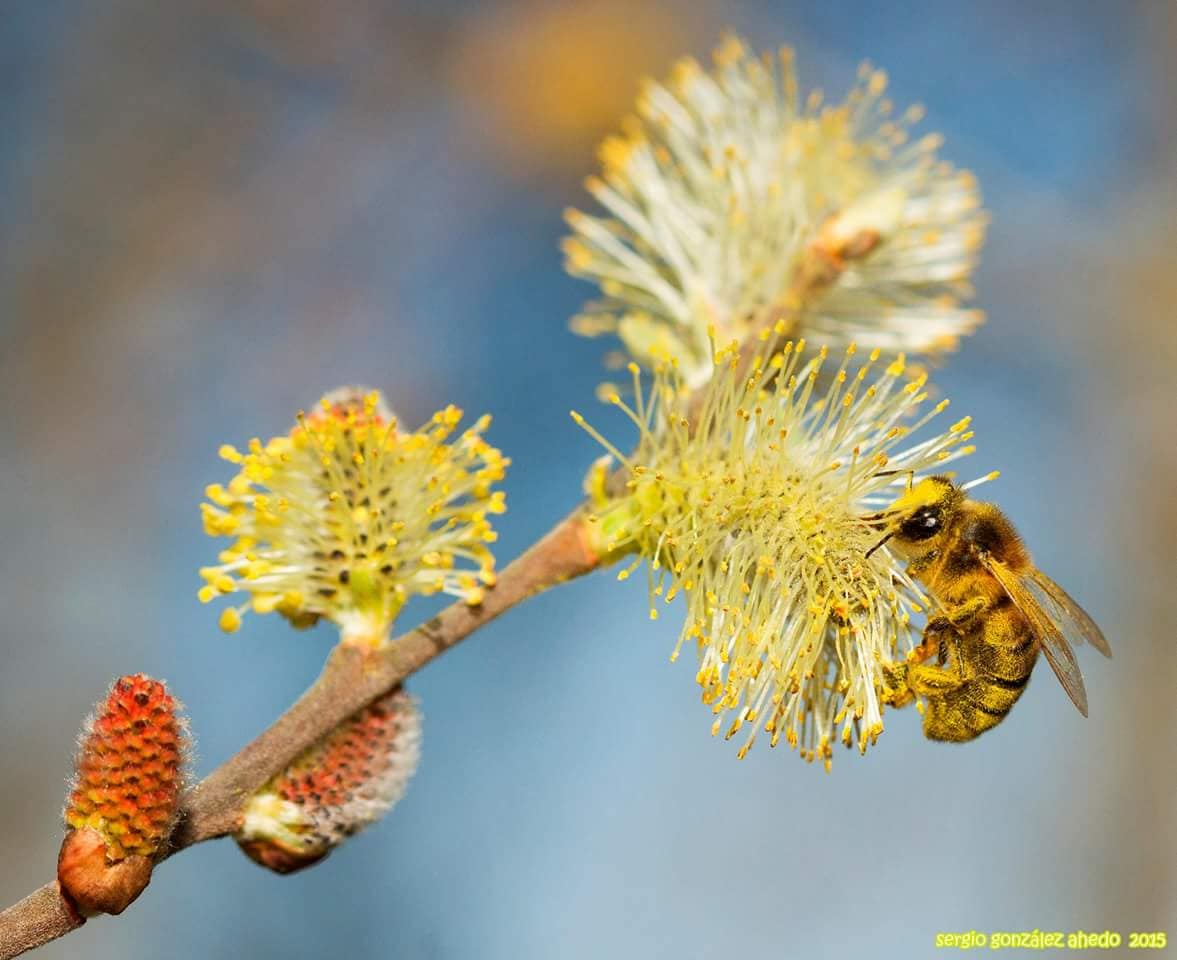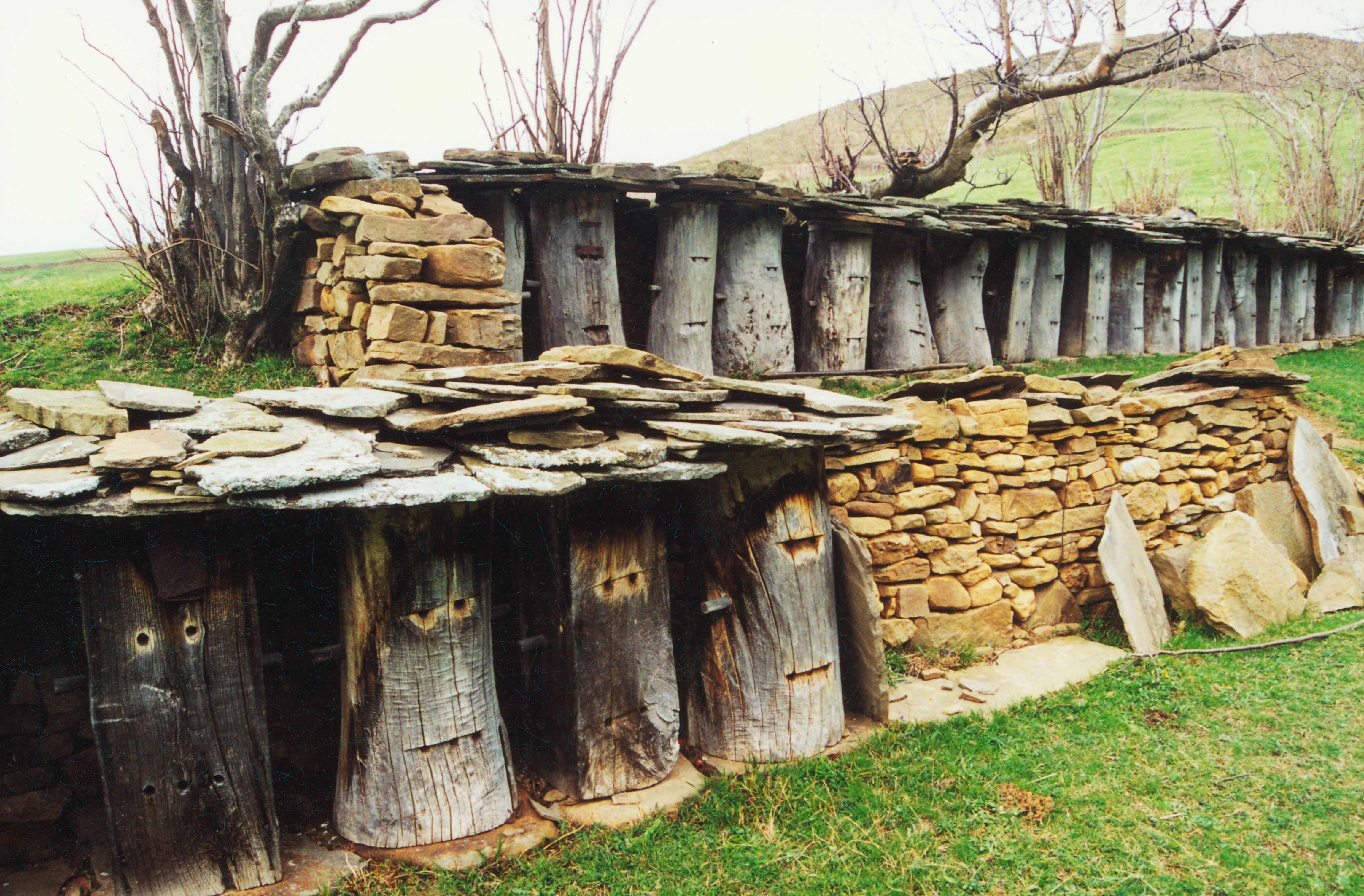Basque ethnography at a glance

Bee on willow catkin. Sergio González Ahedo.
Years ago beehives were kept on most farms. Honeybees were highly respected, appreciated and loved for their honey and wax.
So much so that whoever got rid of a swarm of bees would have an arm amputated, as older folk from the Valley of Carranza (Bizkaia) used to say. This ancient thought still lives in the memory of our elders, who thus would never destroy a hive. A similar belief that bee and honey thieves were punished by removal of their right arms entered the folklore of some localities in Álava.
Honeybees are not known to attack keepers without reason or provocation and very rarely resort to stinging. Bees learn to recognize their master, so it is common to see beekeepers handling their hives without protection. They do not even actually need to wear a veil except when it is time to harvest the honey. The custom of talking to the bees is likewise observed by some owners, who are believed to be distinguished by the sound of their voice and therefore not considered as intruders.
In the event of a bee sting the first thing to do is to get the stinger out quickly. The longer it stays in the skin, the more venom it releases. Formerly in the Valley of Carranza, once the stinger was out, clay or mud was applied to the sting site to ease the pain and prevent swelling. The wound was subsequently washed and oiled. Another recommendation was that the area be rubbed with any three leaves or herbs, provided they were different. Similarly, smoke was believed to reduce discomfort, and more recently soaking the skin in ammonia has been shown to help.

Ancient apiary in the Valley of Carranza (Bizkaia). Miguel Sabino Díaz.
In the mentioned valley wild honeybees have popularly been distinguished by their aggressiveness and honey production potential. Based on experience gained over the years, local farmers make a further distinction between ‘kind’ and ‘fierce’ honeybees. Aggressiveness of bees is also associated with their production capability, that is, the more hostile a hive, the more honey it produces.
Segundo Oar-Arteta – Etniker Bizkaia – Etniker Euskalerria Groups
Translated by Jaione Bilbao – Ethnography Department – Labayru Fundazioa
Reference for further information: Livestock Farming and Shepherding, part of the Ethnographic Atlas of the Basque Country collection.

